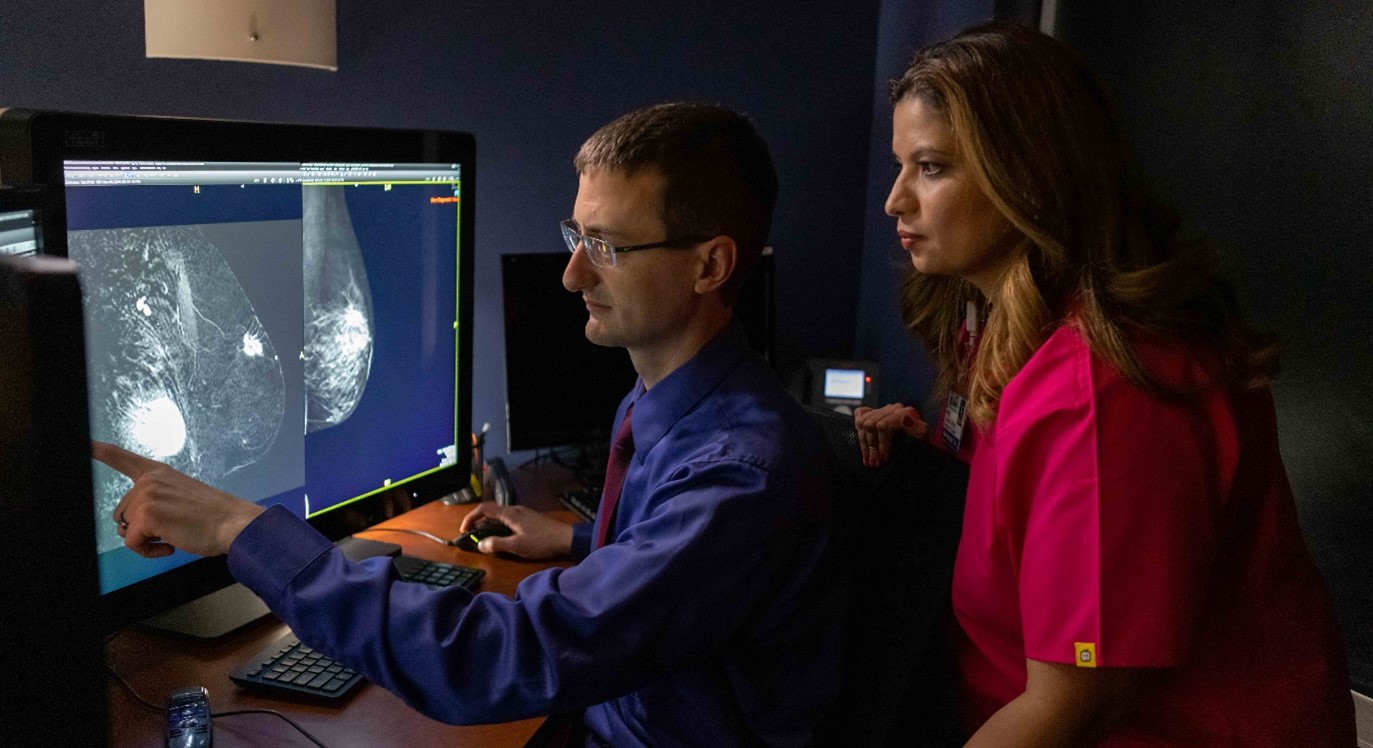As the new year starts off, many practitioners are assessing how they can improve 2023 by reviewing past years since COVID-19 to better plan for their mammography patients and continue addressing mammography backlog. Some radiology facilities have made a deliberate effort with key actions to address this, while others are evaluating how they can manage planning issues for 2023 and allow for more patients.
To help increase throughput, a few key areas of consideration is to focus on managing available staff and resources while helping protect the health and safety of patients.
5 steps to help breast imagers efficiently meet local demand for screening mammography
-
Take stock of resources.
A quick analysis can be done by documenting your available resources, including staff and tools. How many technologists do you have available? How many radiologists? Do you have digital tools on hand that you can use to streamline patient scheduling and follow up?
Include your mammography team in this assessment. Often, your on-the-ground employees can offer important insights you can use to create more efficient processes. Ask team members to share their ideas regarding how to improve clinical workflow.
You may want to invest in additional technology. A study conducted by MIT Technology Review together with GE HealthCare found that 78% of medical staffers report that their AI deployments have already created workflow improvements. Medical professionals using AI applications are seeing immediate gains in reducing clinical error—something that’s still a major challenge for those who have not yet adopted such tools.[i] AI software can help radiologists efficiently review mammograms and plan follow up for those with suspicious lesions.[ii],[iii]
-
Prioritize patients.
Women who are most likely to be harmed by further delay of mammography should be first in line in screening mammograms scheduling. The Society of Breast Imaging recommends triaging patients from most to least urgent:[iv]
- Women whose breast cancer surgery was delayed. Imaging may be needed to determine response to neoadjuvant treatment and develop a new plan of care.
- Women who were recommended to undergo percutaneous breast biopsy.
- Women who were recalled from their screening exam but haven’t yet had their recall exam.
- Women who need a mammogram to evaluate a non-urgent clinical issue, such as intermittent breast pain.
- Women who wish to resume breast screening. You may decide to schedule high-risk patients (those with a previous history of breast cancer or those with a genetic mutation that increases their risk, for instance) before women at average risk.
-
Expand mammography hours.
Many hospitals and breast imaging centers plan to extend their hours so they can see more patients per day.[v] Some facilities that are normally closed on the weekend expect to offer weekend appointments.
Crunch some numbers to figure out how many patients you can realistically scan in a week, keeping in mind staff capacity. It is important not to overwhelm or burn out your technologists or radiologists. Create a realistic timeline and share it with the community. Let them know what you’re doing to ensure equitable access to care.
-
Address financial concerns of patients.
Many women lost jobs due to the COVID-19 pandemic and health insurance. The American College of Radiology’s Statement on Safe Resumption of Routine Radiology Care During the COVID-19 Pandemic notes that “healthcare institutions should anticipate these needs, take steps to mitigate them and remotely communicate solutions to patients prior to arrival.[vi]
Let patients know about free and low-cost mammography options, including the CDC’s National Breast and Cervical Cancer Early Detection Program and the National Breast Cancer Foundation’s National Mammography Program.[vii], [viii]
-
Reassure patients.
Be sure that your patient-focused messages highlight your dedication to providing them the breast care they need. Additionally, remind your patients that screening mammograms saves lives.
DISCLAIMERS
Photography courtesy of St. Luke's University Health Network
Not all products or features are available in all geographies. Check with your local GE HealthCare representative for availability in your country.
REFERENCES
[i] The AI Effect. MIT Technology Review. https://www.technologyreview.com/hub/ai-effect/. Accessed May 9, 2020.
[ii] CureMetrix cmTriage. https://curemetrix.com/cm-triage/. Accessed May 9, 2020.
[iii] ProFound AI for 2D Mammography. https://www.icadmed.com/profound-ai-2d.html. Accessed May 9, 2020.
[iv]SBI Recommendations for a Thoughtful Return to Caring for Patients. Society of Breast Imaging. https://www.sbi-online.org/Portals/0/Position%20Statements/2020/SBI-recommendations-for-a-thoughtful-return-to-caring-for-patients_April-16-2020.pdf. Accessed May 9. 2020.
[v] Pink Up: Extra Hours for Mammogram Appointments as COVID-19 Restrictions Lift. FKVS12. https://www.kfvs12.com/2020/05/07/pink-up-extra-hours-mammogram-appointments-covid-restrictions-lift/
[vi] ACR Statement on Safe Resumption of Routine Radiology Care During the COVID-19 Pandemic. Journal of the American College of Radiology. https://www.jacr.org/article/S1546-1440(20)30510-X/pdf?_ga=2.24979706.1360224111.1589043370-368765646.1589043370. Accessed May 8, 2020.
[vii] National Breast and Cervical Cancer Early Detection Program. U.S. Centers for Disease Control and Prevention. https://www.cdc.gov/cancer/nbccedp/screenings.htm Accessed May 11, 2020.
[viii] National Mammography Program. National Breast Cancer Foundation. https://www.nationalbreastcancer.org/national-mammography-program. Access May 11, 2020.

